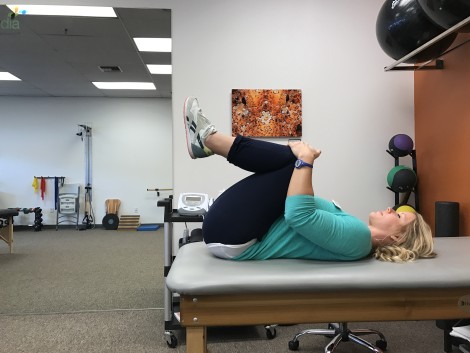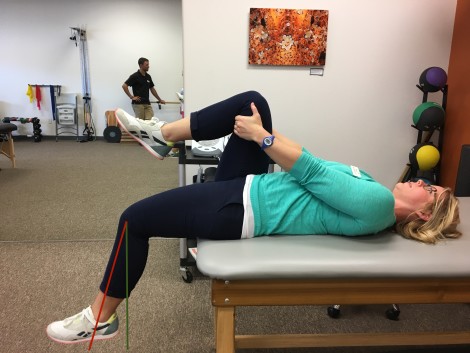
Running With A Physical Therapist
Written by: Stephanie Colasanti, DPT & Tyler Patrick, DPT, OCS, ATC, CSCS
An estimated 10 million in the US run and it is fast becoming the most popular form of exercise. From the cardiovascular improvements to stress relief to losing weight, it’s no surprise that many people pick up running for its health benefits. With the popularity of running increasing, so has the rates of injuries from running. In fact, a whopping 82% of runners will get injured at some point. This could range from relatively minor symptoms to major game changers that can cause you to halt all of your running goals. Although it may seem like the repetitive nature of running would lead to injury, there is no evidence that running is actually bad for you. Now this comes with a disclaimer….with the right type of training and form, your body should be able to withstand the forces in running and get stronger from them, injury free!
That’s where we come in. As physical therapists, we generally see people after they get hurt, which is extremely frustrating for us. With the right guidance, runners of all ages and skill level could benefit from a screening and assessment to PREVENT injury or even unlock performance potential.
What Happens During a Run Analysis
To decrease run-related injuries and improve your run times, a physical therapist will examine the following:
• Muscle strength (muscles provide the force to allow movement)
• Muscle length (allows your joints to move through their full range of motion)
• Joint mobility (joints create movement between bones)
• Ligament integrity (ligaments help keep joints together)
• Running form/movement
Problems with one or multiple of these could lead to excessive wear and tear and possible injury. A physical therapist will examine all of these bones, joints, muscles, as well as how they interact with each other during movement. From your spine, all the way down to your big toe, we will make sure that everything is working the way it should in order to keep you out of that 82% or help manage that nagging injury that prevents you from unlocking your full running potential. By assessing your musculoskeletal makeup and movement patterns, you and your PT will have information on your unique biomechanics and develop a custom treatment program based on those findings.
For a little bit of insight and to get you started at home, here is one of the things we would take a look in a running assessment: hip flexor flexibility.
Hip Flexor Assessment For Runners
Hip flexor tone/tightness is a common issue that we find in people because we have made a life that allows us to sit for everything. Sitting causes your hip flexors to be in a shortened position and leaves your hips and legs tight and your glutes inactive. Why does this matter for running? Tight hip flexors limit the ability of your leg to go behind you (hip extension). Running requires a great deal of hip extension to generate the force to propel you forward. Tight hip flexors can also cause your back or knee to take more stress than it should. If you have less than 10-20 degrees of hip extension (or hip flexor flexibility), the range of motion required for normal walking/running, you will increase your chances of injury due to stresses placed on your low back and knees.
To assess your own hip flexor tightness, lay down on the edge of a bed, then bring both of your hips up towards your chest:
Allow one leg to fall down with your knee bent slowly. You have iliopsoas (hip flexor) tightness if your thigh is not parallel to the table/bed:
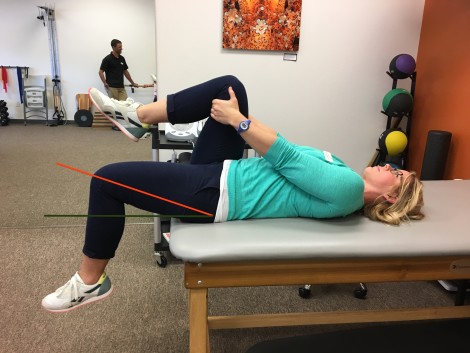
You have rectus femoris (hip flexor/knee extensor) tightness if your lower leg is not straight up and down:
If you find that you have some tightness, here are a few stretches that will get you started on improving your flexibility.
2 Stretches For Tight Hip Flexors
Lunge Hip Flexor Stretch
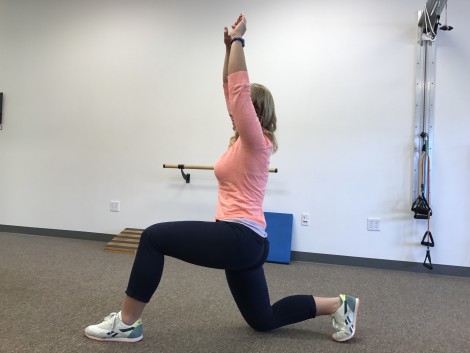
Couch Stretch
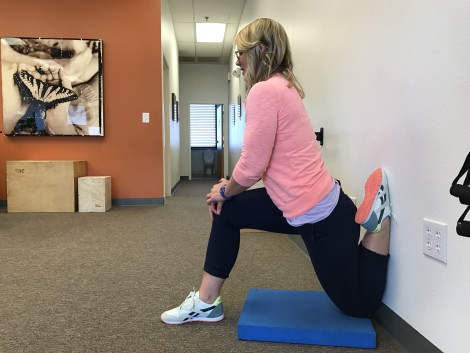 Perform each stretch for at least 30 seconds, but preferably 1 minute. Do this about 3 times on each side daily. Contract your butt muscles on the leg where the knee that is down to prevent your pelvis from tilting forward. Also, work on your breathing to sink into the stretch during the exhale.
Perform each stretch for at least 30 seconds, but preferably 1 minute. Do this about 3 times on each side daily. Contract your butt muscles on the leg where the knee that is down to prevent your pelvis from tilting forward. Also, work on your breathing to sink into the stretch during the exhale.
Get started on your flexibility and come see one of us down at Therapydia for a running assessment, as well as an individualized program that will prepare your body to handle the impact of running.
Stay tuned for the remainder of our running series! We will be discussing shoes, as well as some tests and corrective exercises that should help you unlock your full potential!
